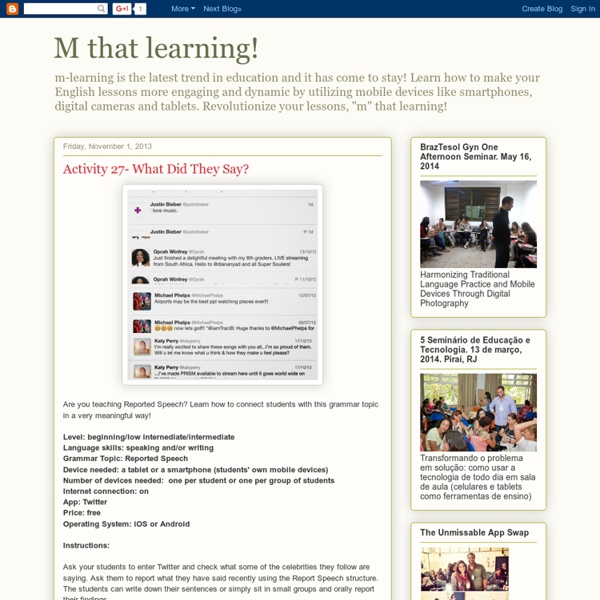M that learning!
Maria's blog: A Selfie-Epic Adventure
How to meet your new students! Some days ago, our teacher guru, Shelly Terrel shared with us a new challenge at the 30 Goals Challenge for Teachers... "Go on a selfie adventure". When I read about it, I thought it was a great idea to meet my new students next year. However, I had a wonderful piece of news at school that same week... I created my own selfie-adventure (though mine was not with selfies and you can see it here) and I also shared Shelly's adventure in our class Facebook group so students could see what they had to do.Students liked the idea and I told them I would give them a mark for the "adventure".
Related:
Related:



